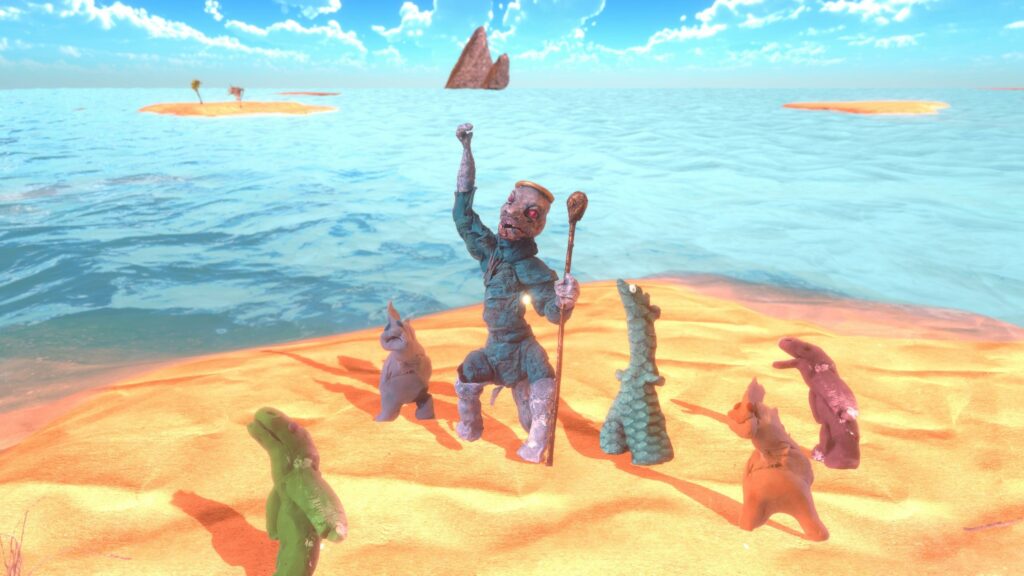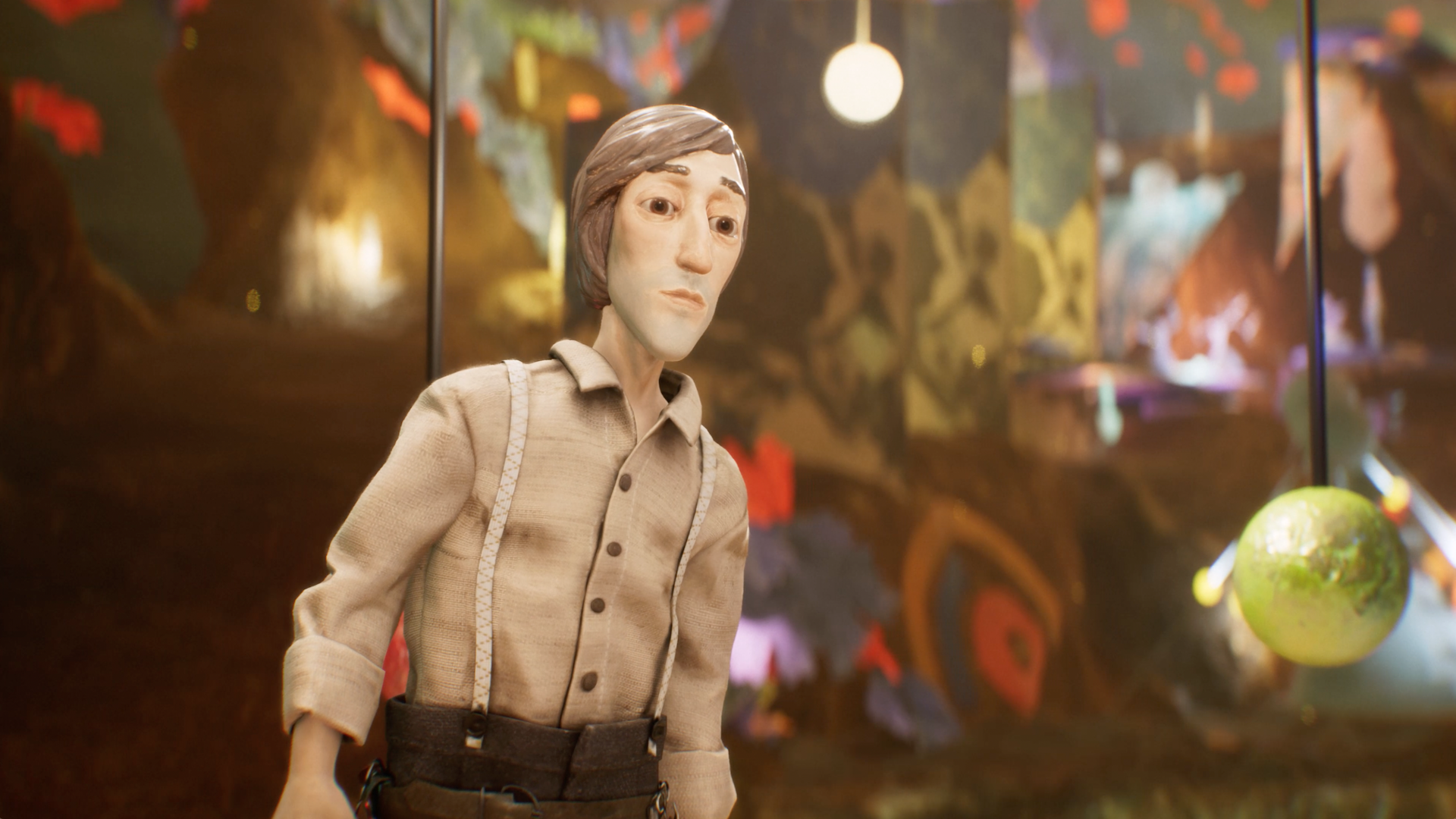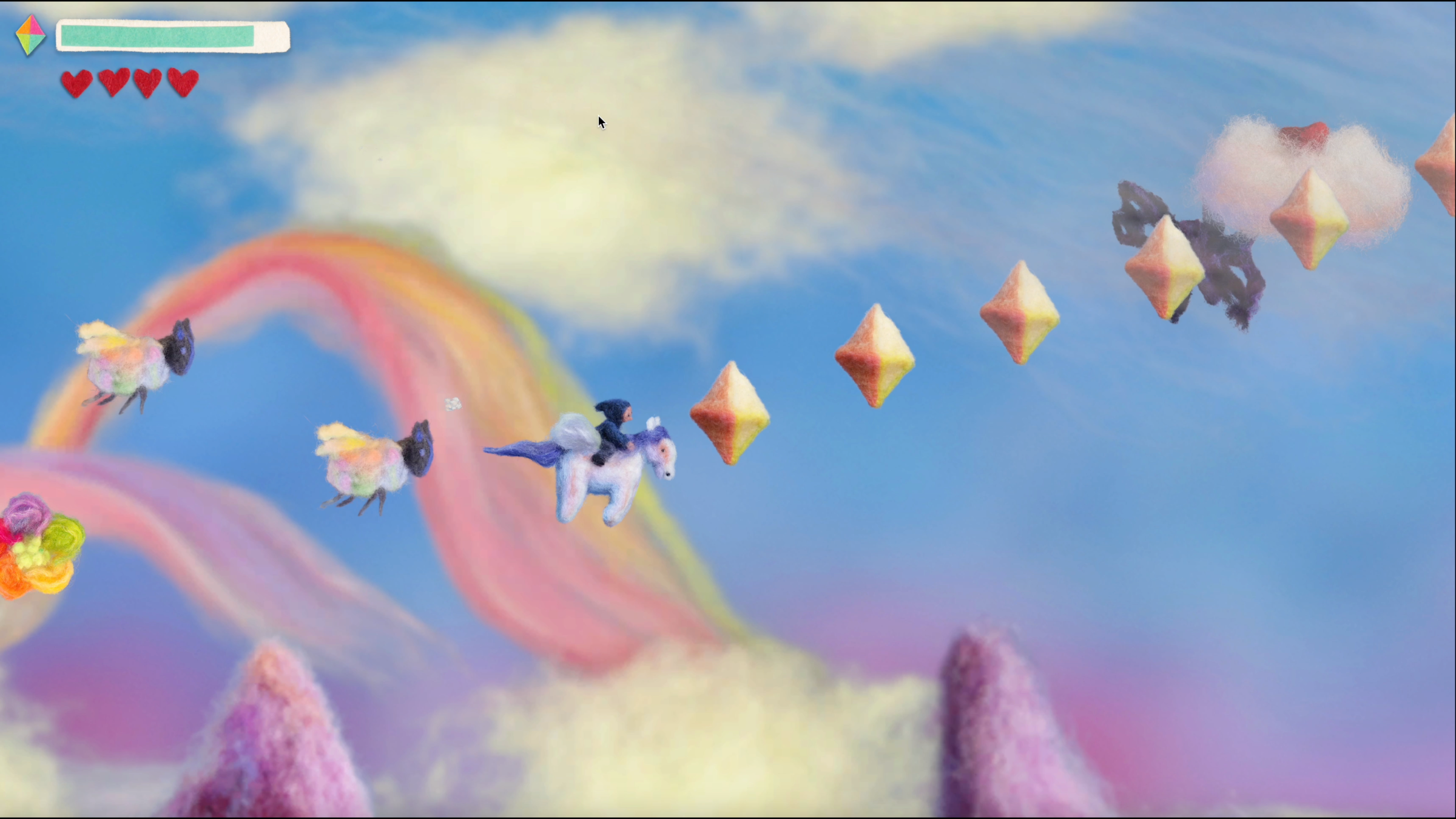One of the biggest lessons of working on stop-motion video games? Rolling up your sleeves — literally.
“It’s such a nightmare,” Talha & Jack Co developer Jack King-Spooner told me over a video call. “You spend maybe half an hour doing one of the cutscenes. The cutscenes are the most precarious things because you have to have everything in the scene exactly the same. And then your sleeve catches something and you’re like ah, Jesus, and I have to do everything again.”
King-Spooner worked with Talha Kaya on 2024’s Judero, an action-adventure game based on the folklore of the Scottish Borders. Now, the creative duo is running a Kickstarter campaign for its new project, Mashina, centered around a cute robot who has to drill. It’s a stop-motion game again, but this time, the team is facing the laborious process with some hard-learned lessons.
The seemingly innocuous gesture of rolling up your sleeves is one of many considerations that studios need to keep in mind when experimenting with handmade characters, objects, and scenes for their games. Stop-motion games aren’t new — the likes of The Neverhood, The Dark Eye, and Skullmonkeys have been toying with this physical-meets-digital marriage since the ’90s. But there’s been a resurgence in recent years due to projects with prominent Kickstarter crowdfunding campaigns, such as Vokabulantis, and smaller teams keeping the momentum going, resulting in a sparse but steady presence thanks to games like Hylics and its sequel to The Dream Machine.
To Talha & Jack Co, there are a few reasons behind the popularity of this art style. Aside from the clear promotional aspect of standing out in an ever-increasing crowd, the team is fond of the playful and physical nostalgia of action figures. When I spoke to them, they’d occasionally open drawers to grab figures and individual pieces, from small feet to mountains made of clay, proudly showing them to the webcam and fiddling with them while they spoke.
“Gaming has been for a long time just an extremely digital thing that you do only by sitting at your computer and changing pixels or programming,” Kaya said. “Now we are in this age where anything can go into a video game, and when you put a lot of literally and metaphorically interesting textures, it just becomes a more interesting work. Stop-motion is a great way to do that.”
For the team behind the point-and-click adventure Harold Halibut, the reason was more simple: it’s what they knew. The developers didn’t have experience with 3D or drawing, but they knew how to build physical things. That philosophy was the foundation of a development period that spanned over a decade. When it came to animating these handcrafted creations, however, they decided on a different approach.
Initially, Harold Halibut was supposed to be animated in traditional stop-motion. The proof is in Slow Bros. cofounder and CEO Onat Hekimoglu’s shelf behind him, the namesake character standing inside a display case with his arms pointing down. Hekimoglu tells me that you can actually move his arms and legs, as opposed to the other characters alongside him, which are T-posing.
“When you put a lot of literally and metaphorically interesting textures, it just becomes a more interesting work”
“In the beginning, we were using actual stop-motion animation, but it all felt too static, and also too much like a Photoshop collage, and we wanted to have a modern-looking feel that fits the time we are in, right?” Hekimoglu said. “Dynamic lighting, dynamic camera work, and all that stuff.”
Eventually, the developer diverged from the original idea to embrace “the best of both worlds,” according to Hekimoglu, taking handcrafted assets and scanning them in a process called photogrammetry. Instead of photographing every animation from different angles, the process involved taking pictures of objects and characters to create digital 3D models.
“I think actual stop-motion is not very suitable for games,” he adds. “When you are working on a film, everything that happens is inside that one image, that’s why everything feels consistent. You can never have that situation in a video game unless you do a full-motion video game.”
Hekimoglu’s point of view resonates with some obstacles that studio Wooly Games is encountering. Development for Feltopia started in the summer of 2023, and the four-person team has been experimenting with an array of handcrafted felt objects in stop-motion fashion since. Feltopia is a shoot-’em-up, traditionally a fast-paced genre, which clashes with the slower nature of stop-motion.
“I animate at 12 frames a second, and when you have your game going at 60 frames a second, there’s sort of a little bit of mixing and matching that goes along there,” creative director Andrea Love tells me. “So we are exploring some slower types of gameplay, more like 2D platformers, and we’ll see how that goes.”
“It’s kind of magic.”
Love has been working on stop-motion animation for over a decade, but doing so for a video game is “very different.” Usually, she would build the puppets and sets and put them all together for a composed scene. For Feltopia, everything has to be an isolated sprite or piece of scenery, so she photographs and animates objects as individual assets. “It’s like taking all these different little things and making a felted interactive collage,” Love says.
Stop-motion requires patience. A little blob that undulates in Feltopia takes around 15 to 20 minutes to make. The animation cycles of the Skyrider, the main hooded character who flies on a pegasus, took around a day, while a boss fight scene unfolded between two to three days. Love also has to create the puppets using wire armatures to rig them up and then remove the wires in postproduction.
But things get easier with experience. During the first animation tests of Judero, it would take King-Spooner around 10 hours to do one animation. As he became faster and more practical in his workflow, the team was able to increase the scope of the game, adding cutscenes and more elaborate characters. Still, considering that each frame involved at least eight photographs, the total count was in the hundreds.
“When you’ve taken 200 photos and then you sit back and press play and all of a sudden it’s actually animated, and then it’s even got an extra step when I throw it over to Talha and we get it in the game, and not only is it moving, we’re controlling it, it’s so fun,” King-Spooner said. “It’s kind of magic.”
Upcoming games like Compulsion Games’ South of Midnight and MoonHood’s The Midnight Walk are taking cues from games like Harold Halibut. They blur the line between stop-motion and the technical or visual expectations of modern games, keeping traditional art style without restricting movement or animations. But for those who are sticking with the craft of stop-motion — whether it’s trying to adjust the lighting of a scene due to different weather affecting photographs across multiple days or figuring out the exact density of felt so puppets don’t fall apart — they’re finding joy in the process, while embracing the work involved.
“That’s usually people’s first reaction,” Wooly Games project manager Michelle Hagewood says. “Why in the world are you doing this to yourself?”



